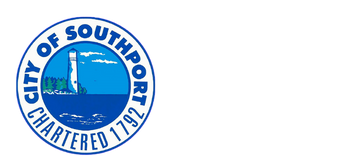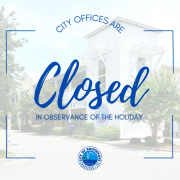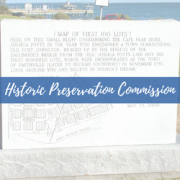
Effective February 28, 2023: Any next day inspections should be scheduled by 3:00 p.m. the day before they are needed. Inspections scheduled after 3:00 p.m. will be scheduled on the next available day.
Permitting Fees
Fees Effective July 2023
| Building Valuation | |
|---|---|
| Finished and Unfinished Space (per sf) | ICC Building Valuation Data |
| Decks (per sf) | $65.00 |
| Porches (per sf) | $65.00 |
| Enclosed storage (per sf) | $100.00 |
| Fences (per linear foot) | $25.00 |
| Fee Schedule A: Residential Construction | |
|---|---|
| From $200.01 to $1,000.00 | $95.00 |
| From $1,000.01 to $3,000.00 | $105.00 |
| From $3,000.01 to $6,000.00 | $115.00 |
| From $6,000.01 to $10,000.00 | $135.00 |
| From $10,000.01 to $15,000.00 | $145.00 |
| From $15,000.01 to $25,000.00 | $155.00 |
| From $25,000.02 to $50,000.00 | $215.00 |
| $55,000.01 and up | $335 plus $8 per thousand over $50,000.00 |
| Accessory Structures | $95.00 |
| Fee Schedule B: General Construction | |
|---|---|
| From $100.00 to $1,000.00 | $95.00 |
| From $1,000.01 to $50,000.00 | $95.00 plus $6.50 per thousand over $1,000.01 |
| From $50,000.01 to $100,000.00 | $415.00 plus $5.50 per thousand over $50,000.01 |
| $100,000.01 and above | $755.00 plus $3.50 per thousand over $100,000.01 |
| Plumbing Permit Fees | |
|---|---|
| Fixtures, Sewer & Water Connections with other work | $17.00 |
| Sewer Connection only (Each Building) | $85.00 |
| Water Service Only (Each Pipe or Water Tap) | $85.00 |
| Minimum Fee for any Plumbing Permit | $85.00 |
| Electric Permit Fees | |
|---|---|
| Residential New Construction (Per Unit) | |
| Temporary Service Connection | $85.00 |
| Rough-in | $85.00 |
| Conditional Power | $85.00 |
| Final | $85.00 |
| Commercial, Industrial, Institutional | $215.00 Base Fee up to 50 circuits, $5.00 for each additional |
| Service Upgrade Residential | $135.00 |
| Service Upgrade Commercial | $190.00 |
| Wiring up to 20 outlets with no service | $130.00 |
| Wiring over 20 outlets with no service | $155.00 |
| Special Circuits | $85.00 |
| Mechanical Permit Fees | ||
|---|---|---|
| Residential Heating and Cooling Fee | $85.00 per unit | |
| Commercial Heating and Cooling Fee | $115.00 per unit | |
| Gas Appliances | $85.00 | |
| Fuel Heater Equipment | $85.00 | |
| Permit Fees for Installation of Blower or Fan | $85.00 | |
| Installation of Tank or Flammable or Combustible Liquids | $180.00 plus $0.35 per barrel | |
| Hoods (all sizes, includes duct and ventilation test) | $140.00 | |
| Solar Panels | $130.00 |
| Gas Permit Fees | |
|---|---|
| Gas Piping Systems | $85.00 |
| Gas Piping an up to (3) Appliances | $85.00 + $28.00 for each appliance over (3) |
| Other Fees | |
|---|---|
| Mobile Home Set UpFee (per mobile home, all trades included) | $265.00 |
| House Moving (per house moved, not including trades) | $265.00 |
| Demolition Fee | $265.00 |
| Swimming Pools | Based on Schedule for General Construction (Valuation) |
| Extra/Reinspections | $85.00 |
| Starting Work Without Permit Fee | 2x basic permit fee, minimum of $160.00 additional |
| Completion of Work Without Permit Fee | Basic Permit Fee plus $300.00 Basic Permit Fee plus $350.00 |
| Failure to Obtain Final Inspection | $300.00 |
| Habitual Working Without Permit Fee | $400.00 second violation, $1500 fee for subsequent violations |
| Refunds on Building Permit | 80% refunds on unexpired permits at Department Head’s Discretion |
| Renewals on Building Permit | 20% of initial fee, not to exceed $500.00 |
| Commercial Shell Permit Fee | Based on Schedule for General Construction (Valuation) |
| Commercial Up-Fit Permit | Based on Schedule for General Construction (Valuation) |

Plans & Ordinances
Planning Maps
Development Fees
Fees Effective July 2023
| Rezoning: Less than 6 Acres | $750.00 |
| Rezoning: 6.01 + Acres | $1,000 + $100/acre |
| Minor Subdivision: 1-7 lots | $300.00 + $50/lot |
| Creation of lots (heirs) | $100.00 |
| Subdivision Exception | $200.00 |
| Major Subdivision | $1,000.00 + $100/lot |
| Master Plan Approval (PUD) | $1,000.00 + $100/acre |
| PUD Modification (Minor) | $500.00 |
| PUD Modification (Major) | $1,000.00 |
| Minor Site Plan | $500.00 |
| Minor Site Plan Modification | $250.00 |
| Major Site Plan | $1,500.00 |
| Major Site Plan Modification | $1,000.00 |
| Conditional Rezoning | $1,000.00 + $100/acre |
| Special Use Permit | $750.00 |
| Special Use Permit Modification | $250.00 |
| Home Occupation | $250.00 |
| Variance | $500.00 |
| Variance Modification | $250.00 |
| Appeal | $250.00 |
| Interpretation | $250.00 |
| Zoning Text Change/Code of Ordinance Amendment | $250.00 |
| Zoning Verification Letter | $100.00 |
| Zoning Compliance Permit | $100.00 |
| Zoning Compliance Change of Use (existing structure) | $100.00 |
| Floodplain Development Permit | $100.00 |
| Flood-zone Determination Letter | $100.00 |
| Tree Removal Permit | No Charge |
| Sign Permit 0-20 SF | $75.00 |
| Sign Permit > 20 SF | $100.00 |
| Billboard | $1,000.00 |
| Engineering or Consulting | Up to $75,000 or up to 100% of the costs (if the City has to contract with an engineering firm or consultant for the review or planning of any project within the City limits or Extra-territorial jurisdiction) |
Development Services Permits
- Agent Authorization
- Annexation Checklist
- Appeal Application
- Appendix A
- Major Site Plan Application
- Major Subdivision Final Plat Application
- Minor Site Plan Application
- Mobile Food Vendor Zoning Permit
- Planned Unit Development Permit
- Rezoning Application
- Special Use Permit Application
- Special Use Permit Process
- Subdivision Application
- Variance Application
- V Zone Design Certificate

CAMA Certified Comprehensive Land Use Plan Update (November 2014)
The City of Southport is excited to begin the process to update its CAMA-certified Comprehensive Land Use Plan. The updated plan will guide the City’s future development and include an updated Future Land Use Map. The plan will also include recommendations related to housing, economic development, infrastructure, resiliency, natural resources, recreation, and more. Read more about the contents of a Comprehensive Plan below.
View the draft schedule of the Comprehensive Plan Update below:

What is a Comprehensive Land Use Plan?
A comprehensive plan is a long-range roadmap for the future of a community, which examines and makes recommendations on a variety of planning activities such as land use, transportation, utilities, infrastructure, community facilities, housing, historic preservation, the environment, recreation, economic development, and more. It provides information about conditions, trends and issues in a community and identifies actions needed to address such issues.
A comprehensive plan is not a regulatory document on its own. Rather, it establishes goals and priorities that guide future growth and development. It also:
- Documents a community conversation: “Where are we at? Where would we like to be?”
- Provides a basis for decision-making, problem-solving and policy development by government officials,
- Establishes priorities for government projects, staff and services.
The Comprehensive CAMA Plan will provide guidance for a broad range of decisions made by Southport’s city government for approximately the next 20 years. The appointed Steering Committee is responsible for guiding the planning process over the course of approximately 12 months. The committee will meet a minimum of 6 times as a group and members are encouraged to gather input on various topics from their friends and colleagues.
Why make a Plan?
The Coastal Area Management Act (CAMA) requires each jurisdiction in the 20 coastal counties to have a local land use plan in accordance with guidelines established by the Coastal Resources Commission (CRC). With increasing threats related to sea level rise and storm threats, it is more important than ever to maintain a forward-thinking Plan. The current City of Southport CAMA Core Land Use Plan was adopted in 2014 and should be updated to reflect changes in the community, development trends, and resiliency standards. Additionally, the State of North Carolina has recently updated its General Statutes to require all cities that have zoning to maintain a current Comprehensive Plan. Southport’s current plan is not reflective of current trends and best practices and must be updated to meet these State requirements.
The new plan will combine both of these efforts, streamlining the City’s guidance into one document. The new Comprehensive CAMA Plan will be a modern resource for the City, reflecting current conditions and incorporating industry best practices.
What is the relationship between the Comprehensive Plan and Unified Development Ordinance?
The Comprehensive Plan lays the foundation for the Unified Development Ordinance, the legal tool for implementing the vision of the future contained in the plan. The plan contains recommendations for land use, housing, historic preservation, transportation, infrastructure, and other areas that are enforced in the City’s Unified Development Ordinance. The Comprehensive Plan does not automatically update the City’s Unified Development Ordinance. Updates to the Unified Development Ordinance are encouraged along with the City’s Capital Improvement Program to implement the vision, goals, and recommendations of the City’s CAMA and Comprehensive Land Use Plan.

Public Engagement
Now is your chance to help influence the City of Southport’s future programming, investment, and policy decisions! Stay tuned for upcoming opportunities to get involved throughout the Comprehensive Plan Update process.
Some opportunities to look out for:
- April 30, 2024: Public Meeting, Southport Community Building, 223 E. Bay Street, Southport
- May 1-August 1, 2024: Photo Contest (click here for contest rules and regulations).
- Email submissions to [email protected] with “Plan Southport Photo Contest, Firstname Lastname”.
Meeting Notes
Steering Committee
Stakeholder Committee

The City of Southport believes that everyone should enjoy a safe and healthy environment to live in which enhances their quality of life.
Code Enforcement has the main responsibility of enforcing several divisions within the Southport General Code of Ordinances that promote its residents’ general overall health and welfare and promote education for responsible citizenship.
The Code Enforcement Officer can assist you with the following matters:

Harlan “HP” Pyles
Code Enforcement Officer
(910) 363-7670

Derek Mabe
Code Enforcement Officer, Alliance Code Enforcement
336-569-9988
CHAPTER 9 – HEALTH & SANITATION
- Includes weed control/overgrown lots
- Mosquito Control
- Junk/nuisance vehicles
CHAPTER 15 – SOLID WASTE VIOLATIONS
- Bulk Items
- Illegal dumping
All complaints must be made in writing so they may be investigated properly.
While many people think complaints can be handled with just one visit to the resident, please be aware that all complaints require due process, including registered mail and coordination with other departments. These steps take time, so complaints may not be resolved quickly.
Health/Sanitation Division
The Southport Code of Ordinances addresses health and sanitation matters in chapter 9 of the city code. The Code Enforcement Officer has several programs that coincide with health and sanitation matters.
The Board of Alderman of the City of Southport has vested the code enforcement officer the authority to enforce this chapter. Health and Sanitation violations bring safety concerns to the community due to the inhabitation of mice, rats, snakes, or vermin of any kind which is dangerous to the public. The City wants everyone to have a safe environment to live in and to be free from unnecessary health and sanitation matters.
The Code Enforcement officer can assist you with the following matters pertaining to health and sanitation concerns:
- Solid Waste Violations
- Weed Control/Overgrown Lots
- Abandon/Junked Motor Vehicles
- Spring & Fall Clean-ups
Solid Waste Division
Section 15 of the Southport Code of Ordinances deals specifically with Solid Waste. The Code Enforcement Officer has enforcement rights of this code.
The City of Southport no longer picks up garbage or yard debris. A County-wide contract is held with Waste Industries Inc. Any refuse placed in front of a residence will result in a citation with a fine. Arrangements must be made with Waste Industries Inc for particular pickup of white goods, brown goods, or large amounts of yard debris.
Illegal dumpsites in the City are being monitored by the Code Enforcement Officer and the Southport Police Department. Violators will be prosecuted to the fullest extent of the law. Any information regarding illegal dumping or solid waste violations may call the code enforcement officer at 910-713-3862.
To arrange for a special garbage pick-up call:
Waste Industries Inc
1-(800) 814-4544

The City of Southport Unified Development Ordinance Update was adopted and rendered effective on September 23, 2020. Among other changes, the following significant items were completed as part of the update:
- Legislative updates for conformity with NC General Statutes.
- Reduction of text from 27 articles to 8 articles.
- Update to the tree preservation provisions to encourage the protection of existing canopy, including lot clearing provisions and enforcement. These can be found in section 3.18.
- Inclusion of mitigation (re-planting) requirements for removal of regulated trees in any setback or removal of any specimen tree located anywhere on site. If live oaks are removed, must replace with 50% of same. Mitigation requirements are in 3.18 M.
- Updates and modifications for overall organization and clarity. Reduction in overall text and clarification of many ambiguous, conflicting, and unclear provisions.
- Consolidation of approval procedures, roles, responsibilities, and administrative items into one article.
- The establishment of roles and responsibilities for the UDO Administrator.
- Clarification of development approval processes and responsibilities for major/minor site plans, major/minor subdivisions, exempt/final plats, and planned unit developments.
- Inclusion of a Conditional Zoning procedure to aid in consensus-built and public-supported development outcomes.
- Consolidation of closely related permitted uses (including adult and manufacturing uses) and expanded definitions to reduce the number of uses contained in the permitted use table, including the removal of obsolete uses. Separation of uses by accessory, residential, and non-residential use types.
- Consolidation and clarification of setback encroachments and height exceptions.
- Consolidation of development standards such as fences, parking, tree preservation, and buffers into one article.
- Inclusion of building design standards for the CBD and BD zoning districts.
- Overall reduction and simplification of off-street parking ratios to encourage redevelopment and re-use of existing buildings in the CBD and BD zoning district.
- Clarification that no off-street parking shall be required in the CBD zoning district for new construction or redevelopment.
- Inclusion of pedestrian facilities section outlining sidewalk requirements for certain types of development (all new major subdivisions, multi-family developments, and new construction nonresidential development of a principal use within the BD, CBD, HC, OI, and MF districts).
- Modification of sign requirements, where appropriate, in accordance with content-neutral requirements of recent Supreme Court ruling.
- Modification of nonconforming situations as “uses” and “structures” to more appropriately address these conditions.
- Inclusion of construction and inspection procedures for the installation of required infrastructure within new subdivisions.
- Removal of the allowance of bonding or financial guarantees for the installation of required infrastructure.
- Update to the Wireless article in accordance with NC General Statutes.
| TEXT AMENDMENT | EFFECTIVE DATE | DESCRIPTION OF AMENDMENT |
|---|---|---|
| Adoption | 09/23/2020 | Unified Development Ordinance Adoption |
| 20-1112-01 | 02/11/2021 | Parking Overlay Language Removal |
| 160-D Changes | 05/13/2021 | 160-D Updates and Changes |
| Short Term Rentals Update | 07/08/2021 | Addition of STVR and Homestay Regulations |
| ZA-21-0830-01 | 11/11/2021 | Outdoor Display Overnight in HC |
| 3.18 Tree Ordinance | 09/08/2022 | Tree Credit and Mitigation Update |
| 3.7 Residential Use STandards | 09/08/2022 | Mixed Use Standards Update |
| 3.9 Dimensional Requirements | 09/08/2022 | Reduction of BD and CBD Height Limits |
| 3.19 Illuminated Sign Update | 09/14/2023 | Addition of Halo Lighting |
| Short Term Rentals Update | 10/05/2023 | Removal of STVR and Homestay Registration |
| 3.10 Driveways | 02/08/2024 | SFH Updated Text |

Community Preparedness
Flood Information
What is the National Flood Insurance Program?
The National Flood Insurance Program was created by Congress in 1968 to reduce the loss of life and property, and the rising disaster relief costs caused by flooding. The program was designed to achieve these goals by: 1) requiring that new and future substantially improved buildings be constructed to resist flood damages; 2) guiding future development away from flood hazard areas; and 3) transferring the costs of flood losses from the American taxpayers to floodplain property owners through flood insurance premiums. In recent decades, over 80 percent of disaster losses nationwide have been caused by floods.
The NFIP is a voluntary program based on a mutual agreement between the federal government and the local community. Federally-backed flood insurance coverage is available to any property owner in return for mitigation of flood risks by community regulation of floodplain development. Flood insurance, and most types of federal financial assistance, such as mortgage loans and grants, are only available in those communities that adopt and enforce a floodplain management ordinance that meets or exceeds the minimum NFIP standards. These same standards must also be adhered to by all federal agencies under a Presidential Floodplain Management Executive Order.
Flood Maps
The updated Preliminary Flood Insurance Rate Maps were issued for Southport. The floodplain data are now being provided in digital format so they can be viewed and downloaded from the NC Floodplain Mapping Program (NCFMP)’s website. You can see the current and preliminary flood maps here https://fris.nc.gov/fris/

Planning & Zoning Board
A Citizens Advisory Board
The Planning & Zoning Board is appointed by the Board of Aldermen and serves as an advisory body to the Board on issues that come before it.
Zoning Board of Adjustments
A Quasi-Judicial Citizens Board
The Zoning Board Of Adjustments is a “quasi-judicial” administrative body that performs the following duty: to hear and decide appeals from; and to review and order requirements, decisions, or determinations made by the Zoning Administrator or Building Inspector. The Board’s function is that of granting variances and conditional use permits.
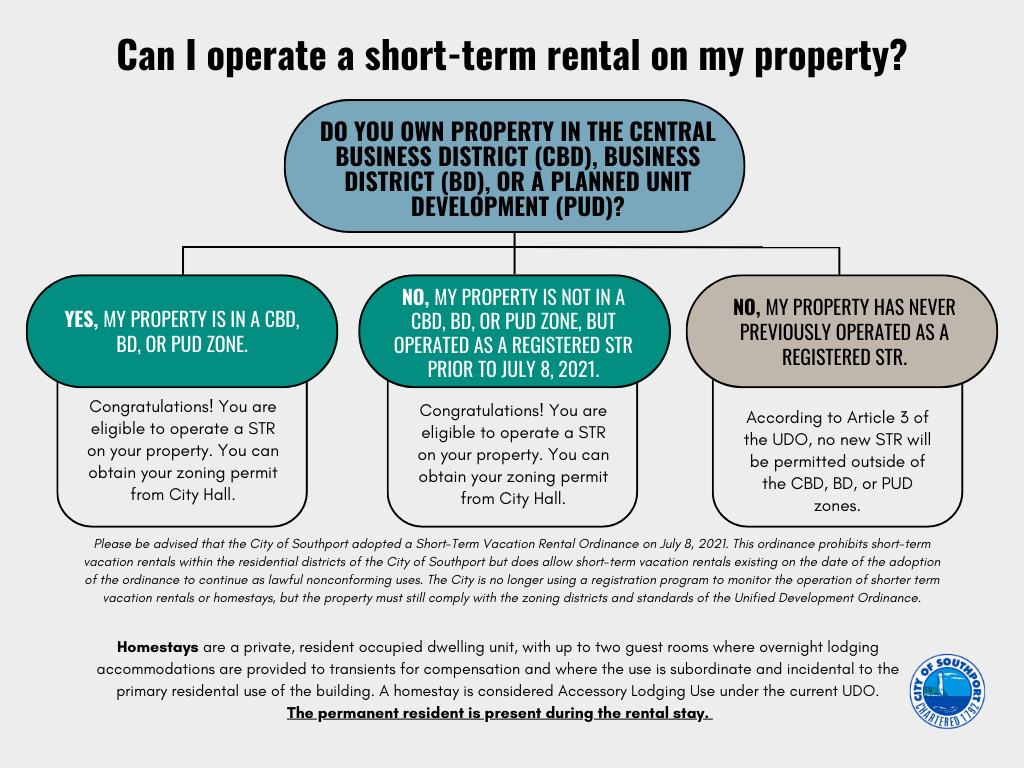
Short Term Rental FAQs
FAQs
FAQs

Chapter 4 ARTICLE V. – EXTERIOR LIGHTING
Sec. 4-151. Exterior lighting regulations.
(a) Exterior lighting within any property, commercial or residential, that unnecessarily illuminates or interferes with the use or enjoyment of any other property is prohibited. Without exception, this provision (a) shall apply to all exterior lighting herein.
(b) Exterior lighting shall not be oriented so as to direct glare or illumination onto streets in a manner that may distract or interfere with the vision of drivers on such streets. Without exception, this provision (b) shall apply to all exterior lighting herein.
(c) Private security light fixtures may not exceed twenty-five (25) feet in height and must be aimed to avoid light emitting upwards toward the sky and shielded to prevent light trespass onto adjacent properties or roadways.
(d) Lighting used to accent landscaping, architectural features or art shall be aimed and shielded to avoid light emitting upwards toward the sky and prevent direct visualization of the source from adjacent properties.
(e) Blinking or flashing lights shall be prohibited unless the lights are required as a safety feature.
(f) Floodlights that are not controlled by an automatic timing device, such as a motion sensor that temporarily provides light where and when needed, must be aimed to avoid light emitting upwards toward the sky and shielded to prevent light trespass onto adjacent properties or roadways.
(g) Fixtures shall meet International Dark Sky Association standards and have a color temperature of three thousand (3000) Kelvin or less. For acceptable fixture design refer to provision (p) herein, “Examples ofAcceptable/Unacceptable Lighting Fixtures”.
(h) If an existing light fixture is removed and replaced, it shall be replaced with a conforming light fixture design(see provision (p)). When an existing fixture requires bulb/lamp replacement, the new bulb/lamp shallconform to the provisions of this chapter.
(i) The temporary use of seasonal “holiday lighting” is exempted from the provisions of this chapter, with the exception of provisions (a) and (b) herein.
(j) “Light strings” utilizing bulbs/lamps equal to, or less than fifteen (15) lumens are exempted from the provisions of this chapter, with the exception of provisions (a) and (b) herein.
(k) Light produced directly or indirectly by the combustion of natural or propane gas is exempted from the provisions of this chapter, with the exception of provisions (a) and (b) herein.
(l) All exterior lighting regardless of the date of installation shall conform to provisions (a) and (b) herein. Exterior lighting installed after the effective date of this chapter shall conform to the requirements established by this chapter and other applicable ordinances unless otherwise exempted. Exterior lighting installed on or before the effective date of this chapter shall be permitted, subject to provisions (a), (b) and(h).
(m) “Exterior lighting” means temporary or permanent lighting that is installed, located, or used in such a manner to cause light rays to shine outside. Lighting installed indoors that is intended to illuminate one (1) or more objects outside and/or that unnecessarily illuminates or interferes with the use or enjoyment of any other property is considered exterior lighting for the intent of this chapter.
(n) These regulations shall not supersede the city street light policy or the lighting requirements in the Unified Development Ordinance.
(o) Temporary lighting installed by any official government agency to address public safety is exempt from the requirements of this chapter.
(p) These illustrations demonstrate the light source characteristics of compliant and non-compliant fixtures. Actual lighting fixture design details may vary.
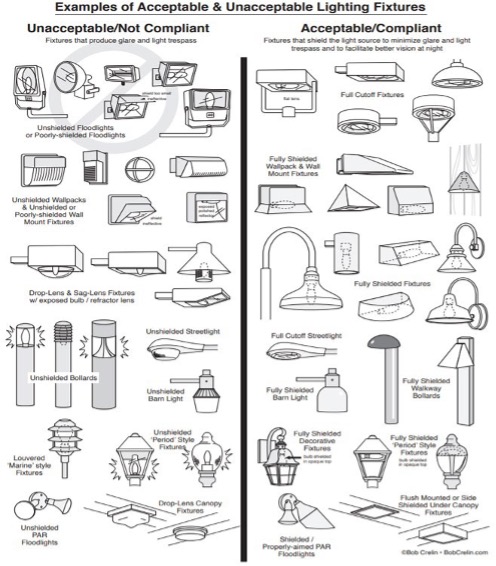
(Ord. of 9-8-22(2))

SOUTHPORT STREET LIGHT POLICY (4-14-2022)
Purpose
To provide standards for outdoor lighting and to establish policy regarding street light installation and maintenance. It will be the policy of Southport to reduce negative impacts on wildlife, human eye sensitivity and the natural beauty of the night sky while providing light to enhance safety and City appearance.
Coverage
This policy shall apply to all outdoor areas within the municipal limits and extra territorial jurisdiction (E.T.J.) of the City of Southport.
Lighting Plan
A plan that details lights for parking, landscaping, exterior building lighting, streets and signs is required for any proposed highway commercial, business district, industrial, Planned Unit Development (PUD), or Major Site Plan project that requires review by the Southport Planning Board.
Wherever possible, solar and dimming technology will be utilized to provide desired light conditions.
Definitions
Central Business District luminaire: Acorn style LED fixture on decorative black pole.
Luminaire: A complete electric light unit. Luminaire for the purpose of this policy will be luminaires pre-approved by the City of Southport and available through the City of Southport electrical installation and repair provider. All fixtures shall meet International Dark Sky Association standards and will have a color temperature of 2700 Kelvin (K) or less. (Appendix 4 identifies approved luminaires for use in Southport and the E.T.J.)
Light Source: (Lamp) The light emitted by Light Emitting Diodes (LEDs) and fiber optics is required. The maximum color temperature permitted is 2700 Kelvin (K). Existing light sources of incandescent, metal halide, or high-pressure sodium will be replaced with 2700K LED whenever a light source needs repair, replaced or as part of a maintenance plan.
Southport Historic District: Refer to the Southport Historic District map retained in the Planning Department.
Southport Special luminaire: Single bell-shaped fixture with LED as approved by the City of Southport.
Street Light Map: Color coded map attached to policy (Appendix 5). Colors identify criteria to be followed for luminaire installation. 2
Artificial Light General Use
A. Street Lighting fixtures may not exceed 40 feet in height (as measured from the ground to the top of the pole). The City of Southport may permit fixtures above this height when necessary to provide illumination for situations other than streets such as but not exclusive to: stadiums, water tanks, towers or recreation fields.
B. Lighting within any property that illuminates or interferes with the reasonable use or enjoyment of any other property is prohibited.
C. Blinking or flashing lights shall be prohibited unless the lights are required as a safety feature and approved by the City of Southport.
Lighting of City Maintained Streets
It is the goal of this policy to provide safe, effective lighting on City of Southport maintained streets consistent with the community’s historic character and residential neighborhoods. Lighting and maintenance of street lights will be the responsibility of the City when the lights are directly connected to the City of Southport electrical grid. If the streetlights on city maintained roads are the property of BEMC and are connected to the BEMC electrical grid, the cost of lighting and maintaining the street lights will be a shared responsibility between the City and HOA/POA. In all situations, the City’s maximum responsibility/contribution to the cost for operation and maintenance will be an amount that is equal to or less than the City’s monthly power and maintenance cost for a standard street light under this policy connected to the City of Southport electrical grid.
A. At any specified location, lighting shall be installed so that the level of illumination measured in foot-candles (fc), falls within the appropriate range. Foot-candle measurement is determined by measuring the lighted area on pavement, at any given point.
B. Street lights shall be installed within the road right of way or as close to lateral property lines as possible. Shorter or longer spacing intervals are permitted to accommodate the vertical or horizontal street alignment or natural features such as trees.
C. New street light luminaires and poles may replace existing fixtures, when necessary, to accomplish illumination measured in foot candles in accordance with the lighting chart in this document. Appropriate luminaire and pole types will differ depending on the location where the street light is to be installed. If minimum safe light conditions do not exist at a particular location, additional street lights may be installed.
D. Residents along a street may request additional street lighting beyond what is already installed, provided the requested additional street lighting is approved by the City. Requests shall be made by completing the Southport Street Lighting Request Form (See Appendix 3). The City shall determine 3
the area of influence on a case-by-case basis. If approved, the City will process the request and may cover all costs associated with street light installation if funds are available as determined by the City.
E. Residents may request the relocation of a street light. Requests shall be made by completing the Southport Street Lighting Request Form. The City shall consider such a request if the relocation does not reduce the illumination below minimum foot candles. Relocation costs and all facilities abandonment costs must be paid in full to the City, in advance, by the resident(s) requesting the relocation if the request is approved but funds are not approved by the City.
F. When new streets have been completed according to City standards and accepted by the City for maintenance, a request for adoption of the installed street lights can be made by the developer or HOA/POA.
G. In cases of annexation, where the street(s) meets City standards and have been accepted by the City, the streetlights can be considered for adoption by the city. When applicable, the HOA/POA shall make a request for the City to evaluate existing street lights for adoption. If the street lights conform to City standards, the city may adopt the street lights.
Lighting of North Carolina Department of Transportation (NCDOT) Maintained Streets
NCDOT allows the installation of utilities, including lighting along NCDOT maintained roadways through the encroachment process. Several roads in the City of Southport are maintained by NCDOT. If the City plans to change the existing street lighting design on NCDOT maintained roads, the new lighting design must be submitted to and approved by NCDOT, through the encroachment agreement process prior to installation.
Street Lighting Map
A. HOA /POA in a Planned Unit Development or Subdivision (map color purple): Street lights will be identified on plans submitted by the developer to Development Services for new construction or by Homeowners/Property Owners Organization if lights are being replaced.
1) The City of Southport will not pay for any costs associated with the lighting of private streets, parking lots, alleys or driveways.
2) Luminaires and poles used in Planned Unit Developments and Major Site Plans must be approved by the City of Southport.
3) Street lights will be placed at all street intersections.
4) See chart for light levels for streets.
B. Waterfront and Downtown Area Streets (map color blue): Streets highlighted with blue on map that are located in the Waterfront Area, the Yacht Basin, E. Moore St., and including Howe St. up to 14th Street.
1) Lighting in this area will be the Southport Special luminaire mounted on concrete poles.
2) See chart for light levels for streets and intersections.
3) Street lights will be placed at all street and crosswalk intersections. 4
C. Central Business District (map color red): Streets highlighted with red on the map shall conform to the following standards:
1) Utilize a combination of acorn fixtures on decorative poles and standard armed fixtures on wooden poles at intersections.
2) See chart for light levels for streets.
3) When underground electricity is installed in this area, the standard armed fixtures/poles at intersections shall be replaced by Southport Special luminaires on concrete poles.
D. Street Lights on Residential Area Streets (map color green): Streets highlighted with green on map in residential areas beyond the Waterfront/Downtown area and are not part of an HOA/POA; lighting on these streets shall conform to the following standards:
1) Street lights will be approved fixtures mounted on wooden poles.
2) See chart for light levels
3) Street lights will be placed at all street and crosswalk intersections.
E. Street Lights on Main Roadway Corridors (map color yellow): Main roadway corridor street lights shall conform to the following standards:
1) Street lights will be approved fixtures mounted on wooden poles.
2) See chart for light levels
3) Street lights will be placed at all street and crosswalk intersections.
Nonconforming Lights
Luminaires (fixtures) existing as of April 14, 2022 in HOA/POA neighborhoods may remain and shall be considered nonconforming structures. However, nonconforming lights will not be maintained by the City even if such lights are on City maintained streets. Modifications, replacement, or expansions, shall conform to the standards of this policy. If HOA/POA neighborhoods desire to retain nonconforming lights and poles, those shall be maintained, repaired and/or replaced with the like kind, at the expense of the HOA/POA.
Appendix 1: Street light acceptance flow chart
Appendix 2: Light levels chart
Appendix 3: Southport Street Lighting Request Form
Appendix 4: Pictures of approved luminaires and poles
Appendix 5: Map





The Development Services team is located at Southport City Hall, 1029 N. Howe St., Southport, NC 28461
Office Hours: Monday – Friday, 8:30 AM – 5:00 PM
While walk-in visits can often be accommodated, appointments are recommended to ensure the staff you need to speak with are available.
Phone: 910-457-7925

VACANT
Development Services Director

Maureen “Mo” Meehan
City Planner
Email
910-457-7900 ext. 1043

Tori Deviney
Permit Technician
Email
910-457-7925

Kiley Barefoot
Building Inspector
Email
910-457-7900 x 1007

Michael Lavazzo
Building Inspector
(910) 457-7900 ext. 1008
Email

Harlan “HP” Pyles
Code Enforcement Officer
(910) 363-7670
Email

Derek Mabe
Code Enforcement Officer, Alliance Code Enforcement
336-569-9988
2023 Southport Symposium featuring Development Services
Let us know how we are doing:
